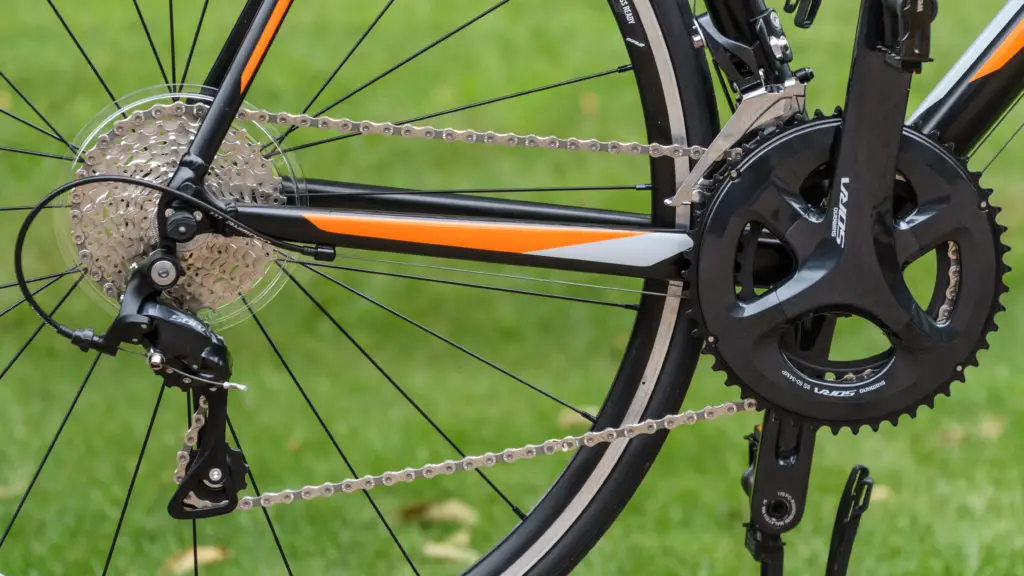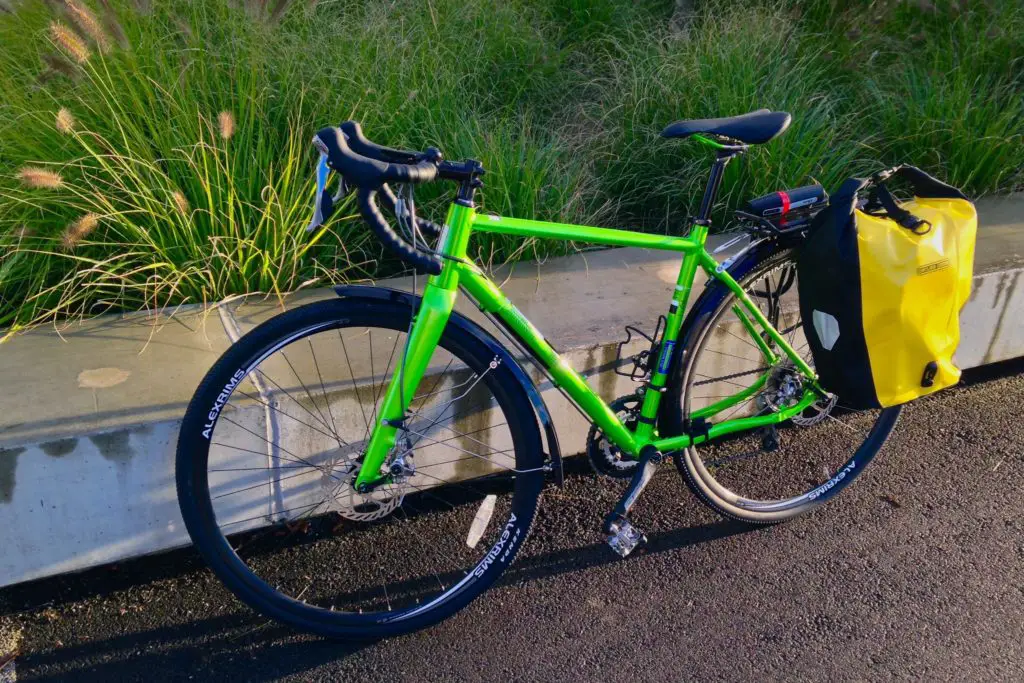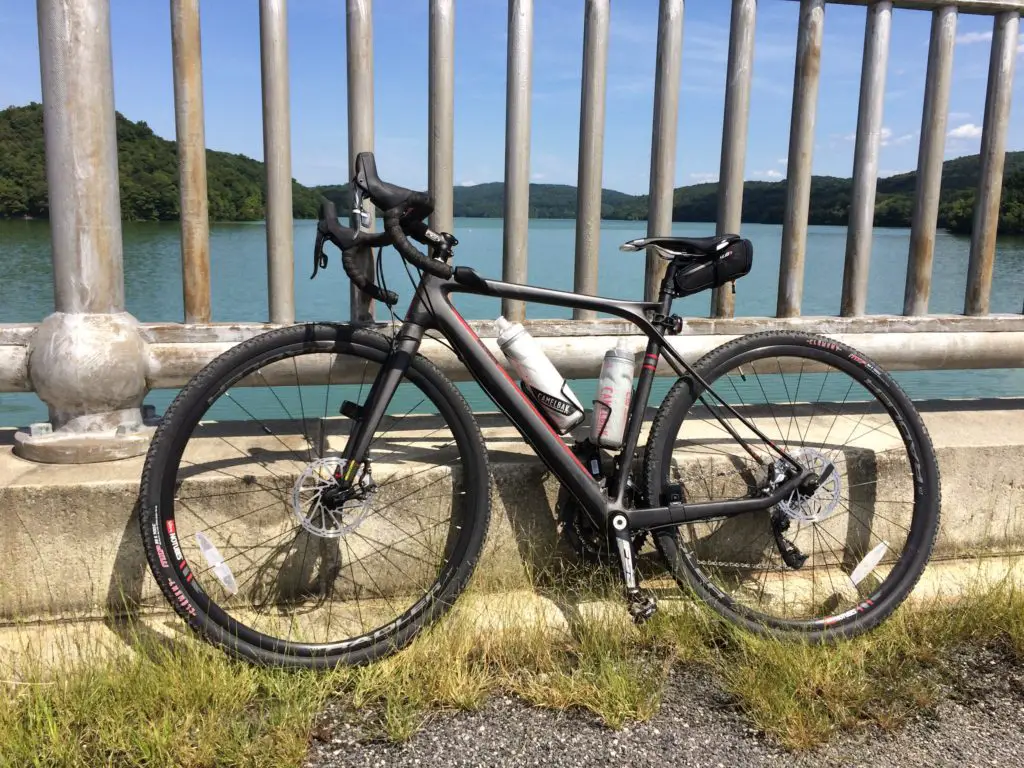When it comes to commuting by bicycle just about any bike will do. Although different types of bikes have their unique advantages and disadvantages as a mode of transportation. This is even more true when it comes to finding the easiest bike to ride for your daily commutes. One thing is certain, some bikes are surely easier to ride than others.
Which bikes are the easiest to ride? The easiest bikes for commuting are touring, hybrid, and gravel bikes. They are equipped with the right gearing, accessory mounting points, and tire clearance optimal for daily commutes. Their relaxed geometry allows a more upright riding position and the wider handlebars facilitate steering.
Right Gearing
Cogs on the sprockets: speeds
From a commuter’s perspective, the major difference between a bike that is easy or hard to ride for commuting is the right gearing.
For example, a single-speed or a three-speed bike can be used but they are often not the best choice. The easiest bike to use will have a wide variety of gears making it great for flat land, going up, or going downhills.
Electric bikes built for everything and priced for everyone. Shop Rad Power Bikes, America's #1 electric bike brand. Get out. Go further. Ride Rad.
When looking at bikes you may hear some terms thrown around like one-by or two-by gearing systems and 9-speed or 10-speed. Hopefully, this can help to explain what it means when you hear these and how it can impact your riding.
The rear wheel of the bicycle will have what most people refer to as a cassette and is the bundle of gears or sprockets that the chain rides on. These are usually composed of anywhere from single-speed to 12-speeds. The number of cogs in the cassette will indicate how many speeds the bike has.
Essentially the more speeds the bike has the more versatile it is as it will have a wider range making it easier to deal with varied terrain such as climbing and going downhill. So when you hear someone say, “This is a 9-speed bicycle,” you can be pretty sure they are talking about the size of the cassette on the rear wheel.
What is a one-by, two-by, or a three-by bike?
Another thing you might hear when it comes to bikes is one-by, two-by, or three-by. This refers to the number of gears or sprockets on the front chainring.
A one-by system has one cog in the front. These have their advantages by removing the front derailleur and simplifying shifting but it means you must have more gears in the rear to make up for the loss in range.

On the other hand, a three-by system has three cogs in the front chainring and allows more range in the front however adding a bit of weight and complexity.
Speeds x chainring sprockets = number of gears
By multiplying these terms together you can find out how many gears the bike has. For example, if you have a 10-speed in the rear and a one-by in the front your bike will have 10 different gears. If you have a 9-speed in the rear and a two-by in the front then you will have a total of 18 gears.

Generally speaking the more gears you have the easier and the more range you will have thus giving you more options while riding. This makes tackling hills and other obstacles simpler thereby making your overall commute easier.
Tire clearance
Trie clearance is sometimes an overlooked thing when it comes to commuter bikes. However, it is important because it can change your ride substantially.

Wider tires will often offer more traction while also improving the ride quality by dampening road vibration. Conversely, thin tires will offer more speed and are lighter but often lack traction and provide a stiffer ride.
Many commuters will change tires depending on the season and this is where clearance is most effective. If your bike can accept a wider variety of tires you can throw on wide tires with aggressive treads in the winter to give you a boost in traction.
Then during the drier summer months, you can throw on a pair of fast-rolling, slick thin-style tires.
The bottom line is versatility will often make your bike ride easier, especially while commuting.
Relaxed Geometry and Wider Handlebar
When reading and doing research about which bikes are easiest to ride you may come across the term geometry. Many beginners hear this term and often wonder what exactly is geometry and what does it refer to?
For lack of a better explanation geometry is essentially the overall shape of the bicycle and how you sit on it. For example road bikes often have what is called an aggressive geometry. This is referring to how a rider on a bike is hunched over towards the handlebars. This riding position is perfect for speed and agility but not always the best for long distances.

On the flip side, there is what is called a relaxed geometry. Many bikes designed for longer rides such as touring bikes or hybrid bikes offer a more relaxed geometry making them more comfortable to ride around town and on commutes. Relaxed geometry pretty much means you are sitting more upright and in a more relaxed position than bikes designed to go fast.
Handlebars
Another thing to look out for is wider handlebars.
These help by offering better control of the bicycle but also by putting you in a more comfortable and relaxed position.
Handlebars that are too narrow will often put undue strain on your shoulders and hands.
So when looking for the easiest bike to ride keep in mind that wider handlebars often provide much more comfort thus an easier and more pleasant riding experience.
When it comes to commuting easy pedaling/riding is only half of the equation. Convenience and comfort are also very important if you carry around your clothes, laptop and personal belongings on your bike in all-weather conditions. Small accessories like mounting points and wide tire clearance can make your life easier.
Mounting Points and Tire Clearance
Mounting points are essential to add things like fenders, racks, and panniers.
Fenders are essential for commuters hoping to tackle inclement weather and continue commuting throughout the winter. They will keep your feet and clothing dry while also protecting your bike and lengthening its life. They also sometimes look very stylish and many commuters pick fenders to match the aesthetic of their bike that they desire.
Racks and panniers

Racks and panniers are other essential pieces of commuting gear. While in the beginning, it can be easy to get by with just a backpack you will almost certainly soon see the need to carry more.
Besides a flat repair kit and things to lock up the bike, it is always a good idea to carry extra clothing, snacks, and anything needed for work.
With a rack and panniers, the options are almost limitless. Make your trips to the grocery store or farmers market a breeze with extra carrying capacity.
Most of these bikes overlap significantly when compared to one another. Read on to find out which bikes are easiest to ride for your daily commutes from a real-life commuter’s perspective.
Touring Bikes

Touring bikes are sometimes considered the gold standard for a commuting rig. This is because they are primarily designed to ride very long distances on paved roads. Meaning they are rugged, reliable, and long-lasting. They are also built with many mounting points for racks, fenders, and other accessories.
They can carry much heavier loads and are usually designed to have lower gearing to make lugging those heavy loads up steep hills easier.
Many seasoned commuters will tell you that a touring bike is the best way to go when it comes to commuting daily. This is especially true with their relaxed rider position when compared to some other bikes.
Pros
- Rugged
- Reliable
- Long-lasting
- Easy to repair
- Plenty of room for accessories
- Comfortable
- Can accept a variety of tire types and sizes
Cons
- Heavy
- Slower rolling
- Primarily intended for paved roads or trails
Hybrid Bikes

Hybrid bikes try to blend the best of both worlds into one highly capable bike. This essentially means that the advantages of both road bikes and mountain bikes can be found on them.
They are often relatively lightweight with tires that are of low rolling resistance. Additionally, hybrid bikes usually have flat handlebars, a comfortable riding position, and a suspension front fork to smooth out the ride.
They can be used both on and off paved surfaces making them a good choice for a mixed terrain commute. Many seasoned commuters will often say that a hybrid bike is the best way to go when looking for a good commuting bike.
Pros
- Lightweight
- Relatively fast
- Smooth ride
- Comfortable riding position
- Mixed terrain is no problem
Cons
- Does not excel at being a road bike or a mountain bike
- Slow when compared to road or fitness bikes
Gravel Bikes

Gravel Bikes sometimes go by many other names such as adventure road bikes, all-road bikes, or any-road bikes.
They are similar to cyclocross bikes having “drop” handlebars and clearance for wider tires but they have a longer and more upright geometry. This makes them very well suited for long days in the saddle touring or commuting.
Best of all gravel bikes can tackle mixed terrain from paved roads to dirt trails making them perfect for commuting in all weather types. They also have a ton of mounting points for a wide variety of accessories making it easy to customize the perfect commuting rig.
Pros
- Rugged
- Able to tackle every type of terrain
- Tons of mounting points for accessories
- Accept a wide variety of tire types and sizes
- Comfortable
Cons
- Slower rolling resistance
- On the heavier side
Final Verdict
If you have a bike it is best to start commuting on it now before you get too carried away with what type of bike you need or what is easiest. The best thing to do is get riding with the bike and see if commuting is the right thing for you. Any bike can be outfitted with the necessary gear or accessories to make it into a commuter.
Once you know what you are after then it is a good idea to look into a bike that fits your specific wants and needs.
But don’t let your bicycle stop you from commuting. Any bike that gets you from point A to point B can be a loyal commuter. The bottom line is to get out there, ride, and you will surely fall in love with commuting.
Happy Riding!
